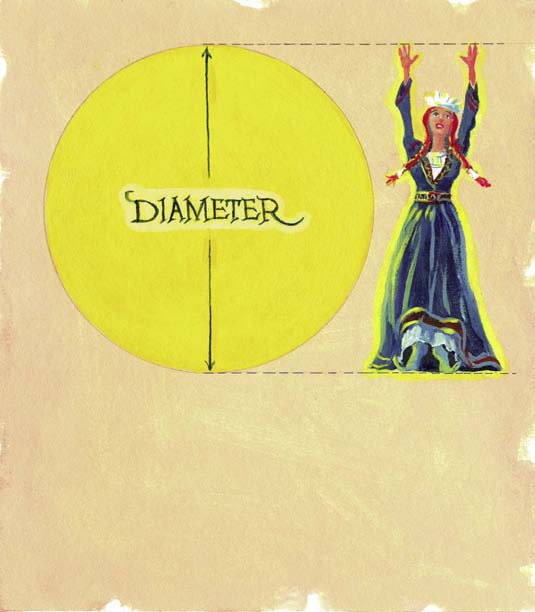The Birth of Sir Cumference
By Cindy Neuschwander

“Math is too hard.”
“I hate math.”
“I don’t get it.”
I hear these familiar refrains from students frequently. As a former math-hater, I can sympathize. I said them all too. And I meant them. Why is it that such a beautiful, structured discipline evokes such negative reactions?
I’ve asked myself this question many times. After years of teaching and observing students, I think part of it boils down to materials. The textbook/workbook pairing is a typical delivery method in mathematics instruction in the United States. It leaves little leeway for inserting outside materials. Teachers can feel constrained and uninspired by these one-size-fits all programs. And so can the kids.
As a result, too many of our students self-select out of mathematics and careers that depend upon numbers. There have been frequent school conferences where parents whisper conspiratorially to me that, “I was never very good at math, either.” But as far as I know, there is no math gene. Everyone can learn this stuff . . . and enjoy it.
What to do? Certainly there are many spices that teachers can and do throw into their instruction to make curriculum more memorable and approachable. Math literature is one of them. There’s always time in the school day to squeeze in a fun story. Why not read a one that you can also use in learning math concepts and skills? It’s been done for quite a few years with good success.
I started doing this in the late 1980s. With the guidance of a marvelous mentor, I used math stories with my second grade students. They responded very positively to them. The only challenge I had back them was the selection. There were so few books to choose from. There seemed to be one way to change that.

I began to write some myself. Sir Cumference was a pneumonic device that I used as a child. I could picture that knight standing around King Arthur’s Round Table. Rather than having to memorize the term from a diagram that showed the circumference, I just told myself a good story. Lady Di of Ameter and son Radius came to me later as I fleshed out a fun geometry adventure that became the beginning of the Sir Cumference Math Adventures.
While living in England in 1993 and teaching school there, the first Sir Cumference story was born. A visit to Winchester Castle was the inspiration. Hanging on a wall in the Great Hall is a round painted table top measuring 18 feet across depicting King Arthur and his knights.
“What if this was the final product of a series of tables that carpenters made for the King?” I wondered. The story gained some legs (unlike the poor table top!). I could explore a number of different shapes as well as how one shape could change into another. There was a lot of geometry there, all in a story.
I worked on the book for a couple of years, while in England and after our family returned to the United States. I took a writing class at a nearby university that helped me understand the picture book genre more clearly. I wrote and rewrote while my poor family heard more iterations of this story than any human should have to tolerate. But they graciously listened and commented.
One day my younger son rushed in after school. “Hey, Seth, how was your day?” I asked. Instead of the usual grunts, I heard an ebullient and engaged response.
“Mom, it worked!”
“What worked?” I asked.
“Your story,” he answered. “I remembered everything on my math test and got it all right.”
Confirmation based upon a sample size of one. Still, it was a good beginning. I kept rewriting until the story seemed as good as I could make it and I sent it off to publishers. Charlesbridge picked it up. The rest is history, as they say.
I’m excited to announce adventure number eleven, Sir Cumference Gets Decima’s Point. It will be available October 27, 2020. It’s a story about decimal place value with ogres and a food fight. It’s fun and memorable mathematics.
The Sir Cumference series: shameless thievery of the Arthurian legend and puns that are so bad, they’re good. Thanks for reading and using them.
Here’s a sneak peek at the cover of the newest math adventure:
- Colette Parry






Comments 0